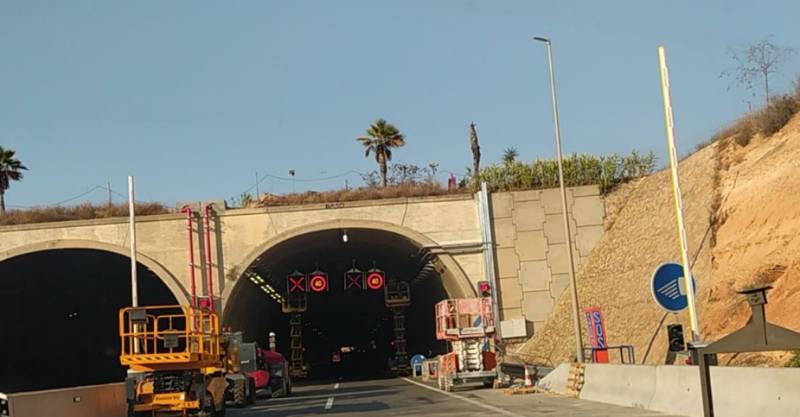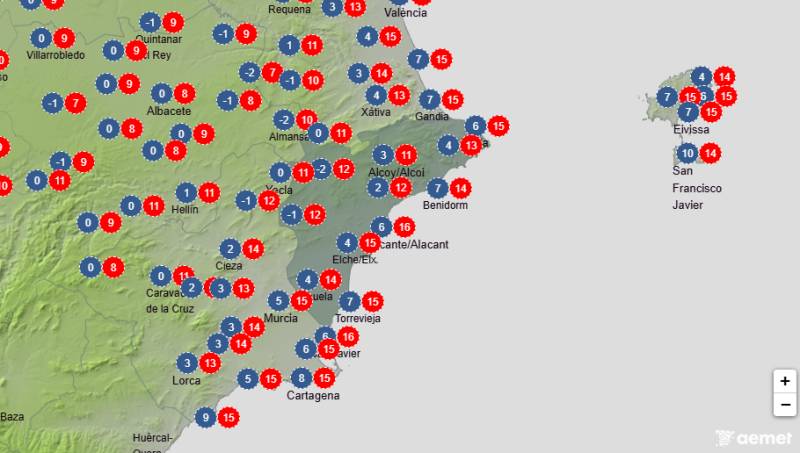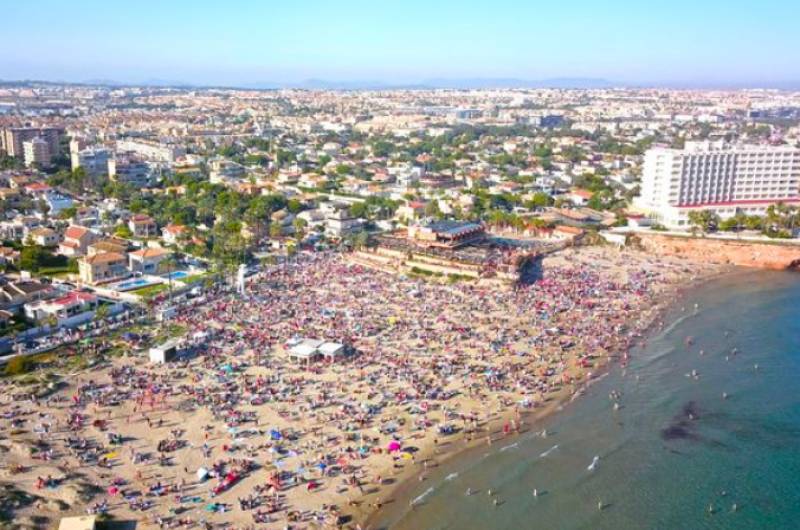

Guidelines for submitting articles to San Pedro del Pinatar Today
Hello, and thank you for choosing San Pedro del Pinatar.Today to publicise your organisation’s info or event.
San Pedro del Pinatar Today is a website set up by Murcia Today specifically for residents of the urbanisation in Southwest Murcia, providing news and information on what’s happening in the local area, which is the largest English-speaking expat area in the Region of Murcia.
When submitting text to be included on San Pedro del Pinatar Today, please abide by the following guidelines so we can upload your article as swiftly as possible:
Send an email to editor@spaintodayonline.com or contact@murciatoday.com
Attach the information in a Word Document or Google Doc
Include all relevant points, including:
Who is the organisation running the event?
Where is it happening?
When?
How much does it cost?
Is it necessary to book beforehand, or can people just show up on the day?
…but try not to exceed 300 words
Also attach a photo to illustrate your article, no more than 100kb

Iglesia de las Santas Justa y Rufina, Orihuela
The church of saints Rusta and Rufina, Orihuela
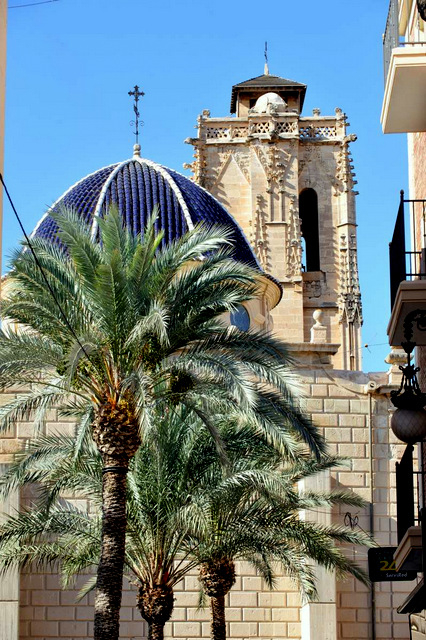 Santa Justa and Santa Rufina are two of the patrons of Orihuela (the others are the Virgen de Monserrate and Christ himself), and this church is dedicated to the two sisters said to have been martyred in Seville during the third century.
Santa Justa and Santa Rufina are two of the patrons of Orihuela (the others are the Virgen de Monserrate and Christ himself), and this church is dedicated to the two sisters said to have been martyred in Seville during the third century.
This church was first built in the Catalan Gothic style in the 14th and 15th century, and although much of the structure from that period remains it was also extensively reformed in the 16th century in the Renaissance style and with baroque elements added during the 18th century.
The elements of the original Gothic church which can still be seen include the most visible and striking element of the church : the tower, which is one of only two original Gothic towers of this type remaining in the whole of the Valencia region, the other being on the Cathedral in Valencia city itself.
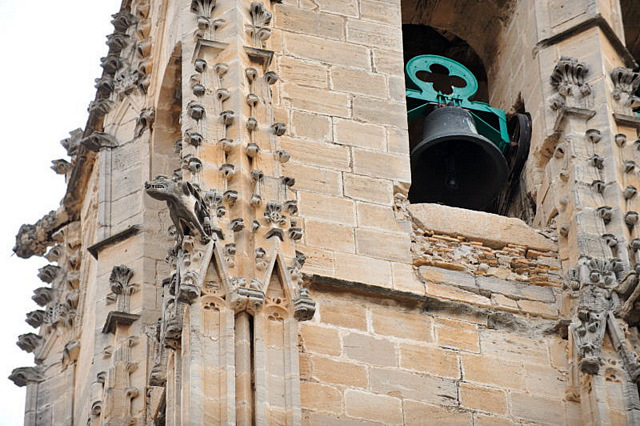 This imposing square structure with impressive gargoyles is unusually tall for such an old building, and is visible from many parts of the city, with distinctive external decoration, including the impressive gargoyles.
This imposing square structure with impressive gargoyles is unusually tall for such an old building, and is visible from many parts of the city, with distinctive external decoration, including the impressive gargoyles.
The clock on the church tower is also worth having a look at as it has survived from the 14th century, and is not only the oldest in the Comunitat Valenciana but also one of the oldest still surviving in Spain, and is complemented by an impressive set of bells, most surviving from the 17th to 19th centuries.
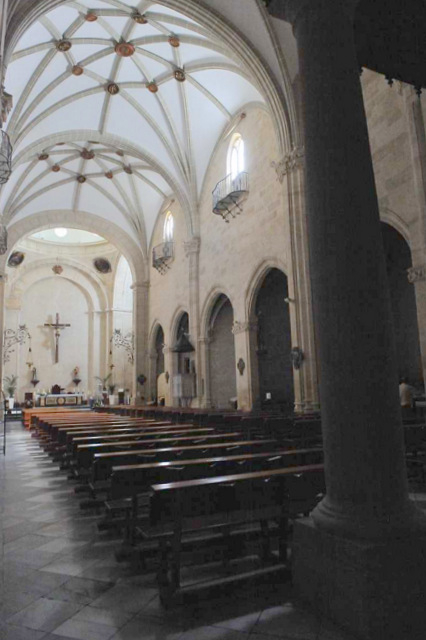 Unfortunately, it’s difficult to get a clear view of the rest of the building as it is right in the heart of Orihuela, where the streets are narrow, and the original lateral façade (with a triumphal arch typical of the architect Juan Inglés) is flanked by a busy road, while the main entrance is practically opposite the Town Hall in the Calle Santa Justa. However, it is worth viewing the church from the attractive plaza to one side of it, a good place to sit and take a breather on a sight seeing trip.
Unfortunately, it’s difficult to get a clear view of the rest of the building as it is right in the heart of Orihuela, where the streets are narrow, and the original lateral façade (with a triumphal arch typical of the architect Juan Inglés) is flanked by a busy road, while the main entrance is practically opposite the Town Hall in the Calle Santa Justa. However, it is worth viewing the church from the attractive plaza to one side of it, a good place to sit and take a breather on a sight seeing trip.
This main entrance is one of the main baroque elements of the building: it was designed by Antonio de Villanueva in reverence to the fachada of Murcia cathedral, and work on it began in 1753. However, as was common in major architectural undertakings of the 18th century, funds ran out in 1766. This explains the curious appearance which the main portal maintains even today: if it looks suspiciously as if it’s not finished, it’s because it’s not finished!
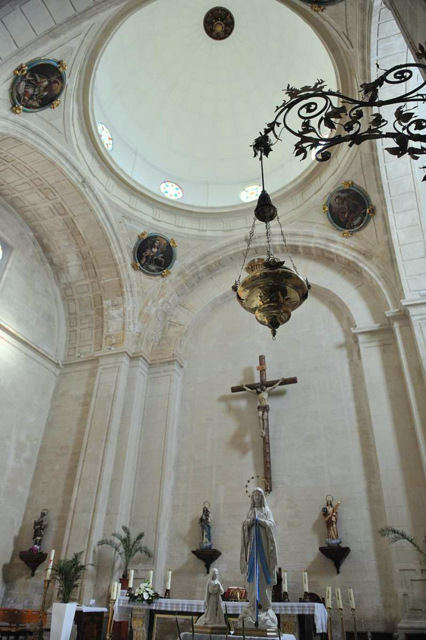 This can be seen most clearly in another part of the church opposite the town hall where huge blocks of stone still fill unfinished parts of the structure.
This can be seen most clearly in another part of the church opposite the town hall where huge blocks of stone still fill unfinished parts of the structure.
From around the same time is one of the most valuable of the many religious images inside the church, a figure of San Judas Tadeo (Jude the Apostle), the patron saint of lost causes, sculpted by the school of the great Murcian Baroque sculptor Francisco Salzillo.
This artist has a museum dedicated to his work in the capital city of Murcia, ( see Museo Salzillo) and was a prolific artist who spent all of his working life in Murcia, so is responsible for many of the important Baroque sculptures remaining in the Valencia and Murcia regions today.
The War of Succession and then the Civil War took their toll on this church, as with so many others across Spain when churches and religious sculptures were destroyed in frenzied protests against the institution of the Catholic 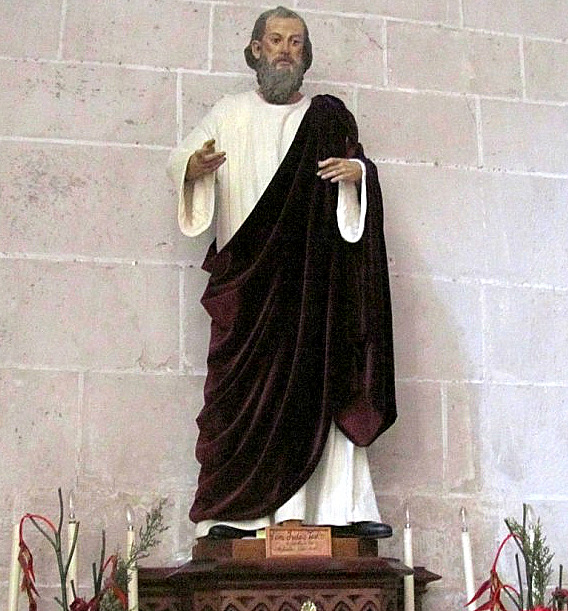 Church.
Church.
The original altarpiece was burnt during the Civil War, along with so many other religious artefacts, but this statue of Jude the Apostle was removed and hidden during the rioting, discovered concealed in a barn after the Civil War.
The chancel is decorated with paintings by Bartolomé Albert, and another striking feature is the late 18th century organ, made in 1790 by J and A Salanova, one of the many elaborate such instruments in Orihuela. The original painted doors from this organ are now in Alicante castle.
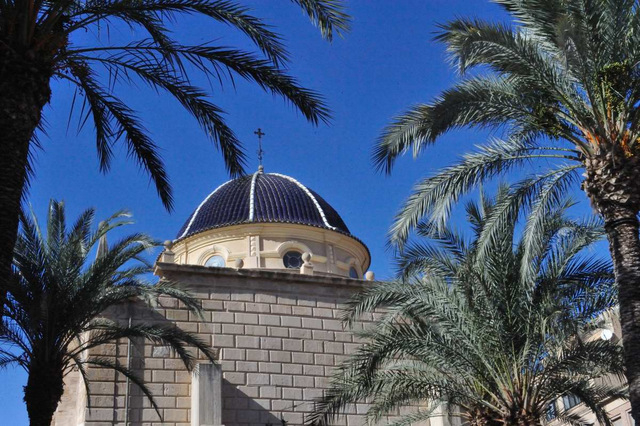 Another feature is the baptismal font fashioned out of red marble dating from 1719, by Jean Bautista Borja, which is covered by an elaborately decorated wooden lid and is still used today for christenings.
Another feature is the baptismal font fashioned out of red marble dating from 1719, by Jean Bautista Borja, which is covered by an elaborately decorated wooden lid and is still used today for christenings.
The sacristy features impressive baroque furniture designed in the 18th century by Jaime Bort, and inside this furniture is a stunning golden chalice. There is also an 18th century cleansing fountain inside, a feature used only by the religious personnel of the church to purify their apparel.
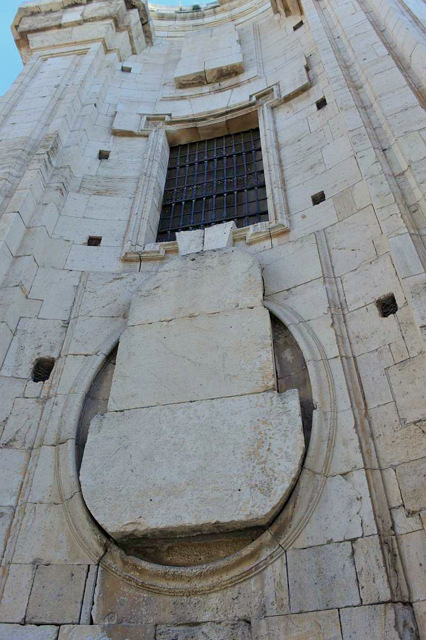 Opening hours for visitors:
Opening hours for visitors:
The church is open to visitors from Tuesday to Friday between 10.00 and 13.45 and from 16.00 to 18.30, and on Saturday mornings from 10.00 to 13.45.
Entrance is free.
Tel. 965 300622
C/Marqués de Arneva, s/n.
Click for map, Calle Marqués de Arneva, Orihuela
Hours of service:
Winter October to June.
Mon-Sat and on the eve of feast days, 19.30
Sundays and religious festivals, 12.00, 13.00 (children's Mass) and 19.00
In the summer these hours do vary, so call if making a special trip or check with the tourist office.
Saints Justa and Rufina
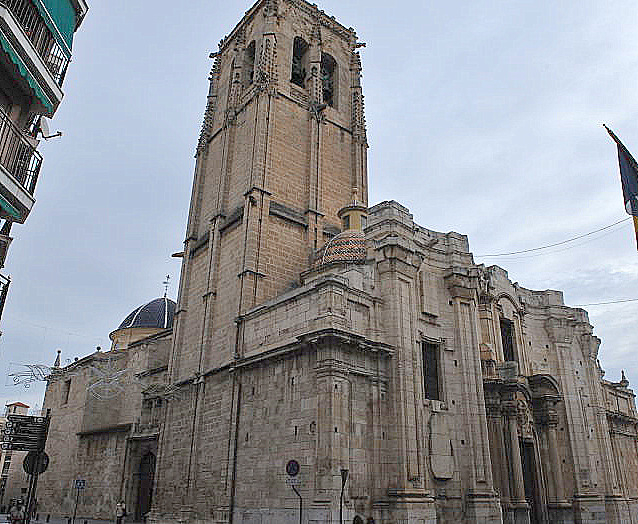 There is some slight confusion about these saints as in one early account they are recorded as Justus and Rufina, ie brother and sister, but in general they are referred to as being two sisters, martyred in the district of Triana, Hispalis, in Seville during the 3rd century AD, during which time Spain was occupied by the Romans and Christianity was spreading throughout the western world. They are often seen in Spanish art, depicted with ceramic pottery as they earned their living selling ceramics and gave part of their takings to the poor.
There is some slight confusion about these saints as in one early account they are recorded as Justus and Rufina, ie brother and sister, but in general they are referred to as being two sisters, martyred in the district of Triana, Hispalis, in Seville during the 3rd century AD, during which time Spain was occupied by the Romans and Christianity was spreading throughout the western world. They are often seen in Spanish art, depicted with ceramic pottery as they earned their living selling ceramics and gave part of their takings to the poor.
During a pagan festival taking place in the City they refused to sell their wares for use in the celebrations, for 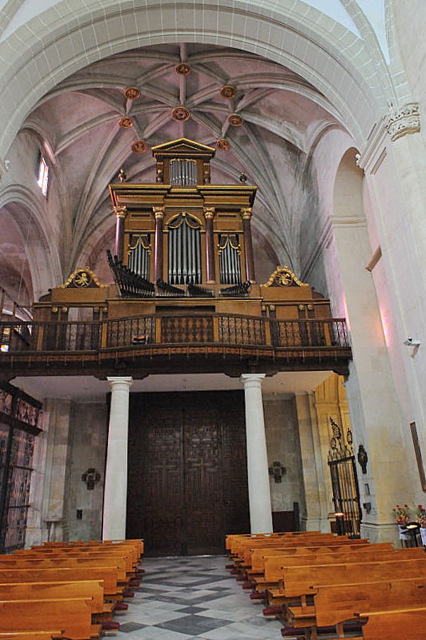 which reason their shop was sacked and their wares destroyed, so the two ( sisters) destroyed a figure of Venus in response. The prefect of the city at this point in time was Diogenianus, and he decreed that they be tortured to recant their Christian beliefs.
which reason their shop was sacked and their wares destroyed, so the two ( sisters) destroyed a figure of Venus in response. The prefect of the city at this point in time was Diogenianus, and he decreed that they be tortured to recant their Christian beliefs.
First they were tortured on the rack, then their flesh torn with iron hooks, following which they were forced to walk barefoot to the Sierra Morena before being flung into prion and deprived of food and water. Justa died and her body was dumped down a wellshaft. Rufina continued to refuse to recant so the prefect ordered that she be thrown to the lions. However, once in the ampitheatre, the lion refused to attack, so bored of waiting for her to die, Diogenianus ordered that she be killed. It’s not clear whether this sentence was carried out by strangulation or beheading, but this time there was no doubt.
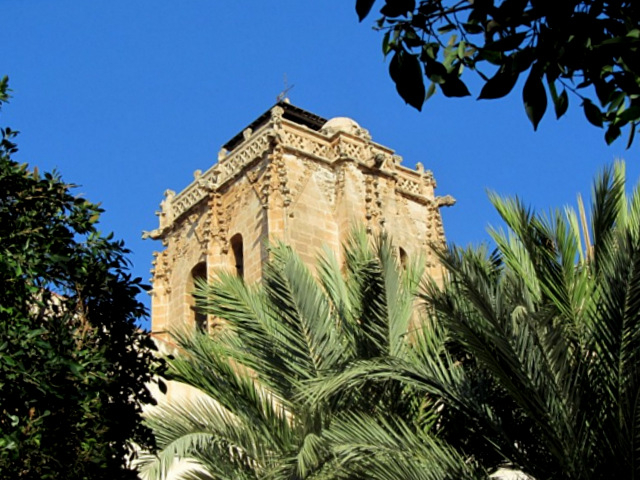 The bodies of both were recovered and interred by the Christian Bishop, Sabinus.
The bodies of both were recovered and interred by the Christian Bishop, Sabinus.
Their saint’s day is celebrated on the 19th July and the saints are particularly venerated in Seville, where they are credited with having given protection to Seville Cathedral during the major earthquake of 1755.













